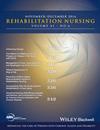Exergames to Improve Rehabilitation for Shoulder Injury: Systematic Review and GRADE Evidence Synthesis
IF 1.1
4区 医学
Q3 NURSING
引用次数: 0
Abstract
Introduction The use of exergames has become an increasingly frequent intervention in rehabilitation, referred to as a fun and motivating activity that involves patients. This systematic review aimed to evaluate the effectiveness of exergames in the rehabilitation of the shoulder joint compared to other types of care. Methods We performed a systematic review and GRADE (Grading of Recommendations, Assessment, Development, and Evaluations) evidence synthesis. The search was conducted using the following databases: MEDLINE, CINAHL, SPORTDiscus, SCOPUS, SciELO, Psychology and Behavioral Sciences Collection, Cochrane Central Register of Controlled Trials, and PEDRo. Databases were searched from the first record until July 2021. Randomized controlled trials using exergames as an intervention were included. Results The search resulted in 1,048 records. A total of 10 articles published between 2013 and 2020 met inclusion criteria and were reviewed for this study. A positive impact was observed in using exergames to increase shoulders’ range of motion, namely, extension, flexion, abduction, internal and external rotation, and functionality postinjury. Conclusions The results of this review provide evidence of the benefits of exergames in shoulder joint rehabilitation. However, more robust clinical trials need to be developed that assess the effectiveness of using exergames as a complement to traditional rehabilitation and assess participants’ degree of satisfaction, motivation, and adherence.锻炼改善肩关节损伤康复:系统回顾和GRADE证据综合
引言运动游戏的使用已成为康复中越来越频繁的干预措施,被称为一种有趣且激励患者的活动。这项系统综述旨在评估与其他类型的护理相比,运动锻炼在肩关节康复中的有效性。方法我们进行了系统的审查和GRADE(建议、评估、发展和评估的分级)证据综合。使用以下数据库进行搜索:MEDLINE、CINAHL、SPORTDiscus、SCOPUS、SciELO、心理学和行为科学收藏、Cochrane对照试验中央登记册和PEDRo。从第一条记录到2021年7月,对数据库进行了搜索。包括使用运动游戏作为干预的随机对照试验。结果检索到1048条记录。2013年至2020年间共发表了10篇符合纳入标准的文章,并对其进行了审查。使用运动游戏来增加肩部的运动范围,即伸展、屈曲、外展、内外旋转和受伤后的功能,观察到了积极的影响。结论本综述的结果为运动锻炼在肩关节康复中的益处提供了证据。然而,需要开发更强有力的临床试验,以评估将运动会作为传统康复的补充的有效性,并评估参与者的满意度、动机和依从性。
本文章由计算机程序翻译,如有差异,请以英文原文为准。
求助全文
约1分钟内获得全文
求助全文
来源期刊

Rehabilitation Nursing
医学-护理
CiteScore
1.90
自引率
7.70%
发文量
68
审稿时长
>12 weeks
期刊介绍:
Rehabilitation Nursing is a refereed, award-winning publication and is the official journal of the Association of Rehabilitation Nurses. Its purpose is to provide rehabilitation professionals with high-quality articles with a primary focus on rehabilitation nursing. Topics range from administration and research to education and clinical topics, and nursing perspectives, with continuing education opportunities in every issue.
Articles range from administration and research to education and clinical topics; nursing perspectives, resource reviews, and product information; and continuing education opportunities in every issue.
 求助内容:
求助内容: 应助结果提醒方式:
应助结果提醒方式:


